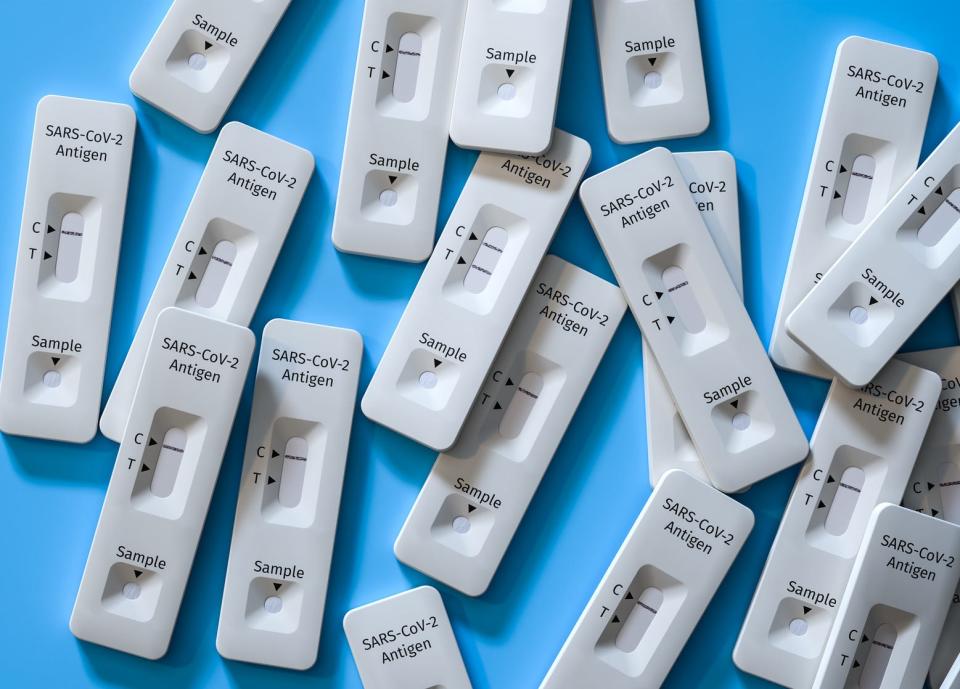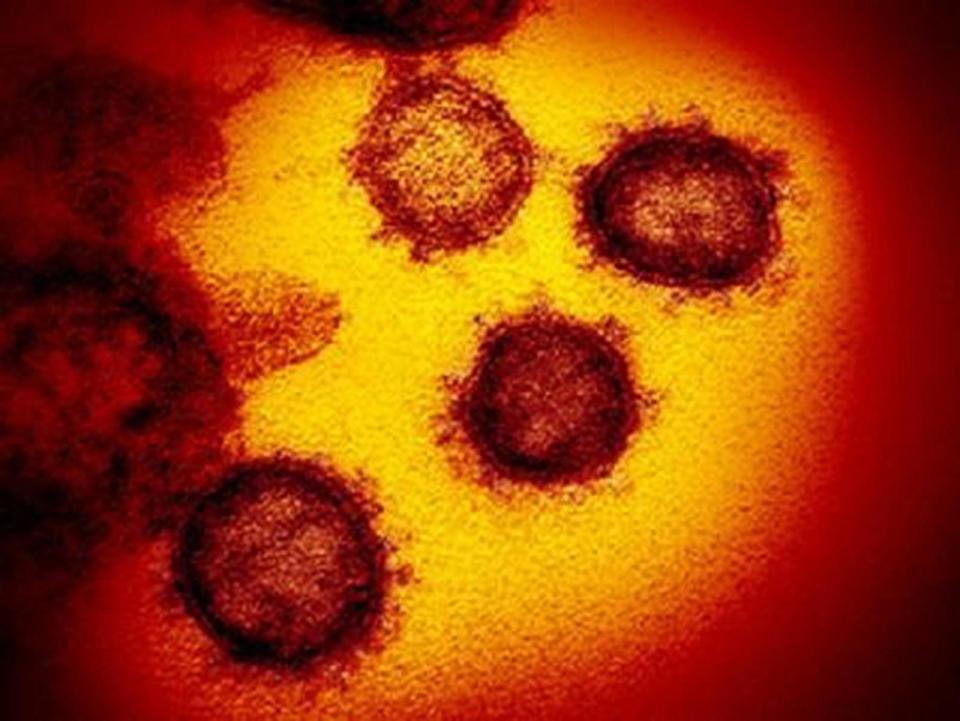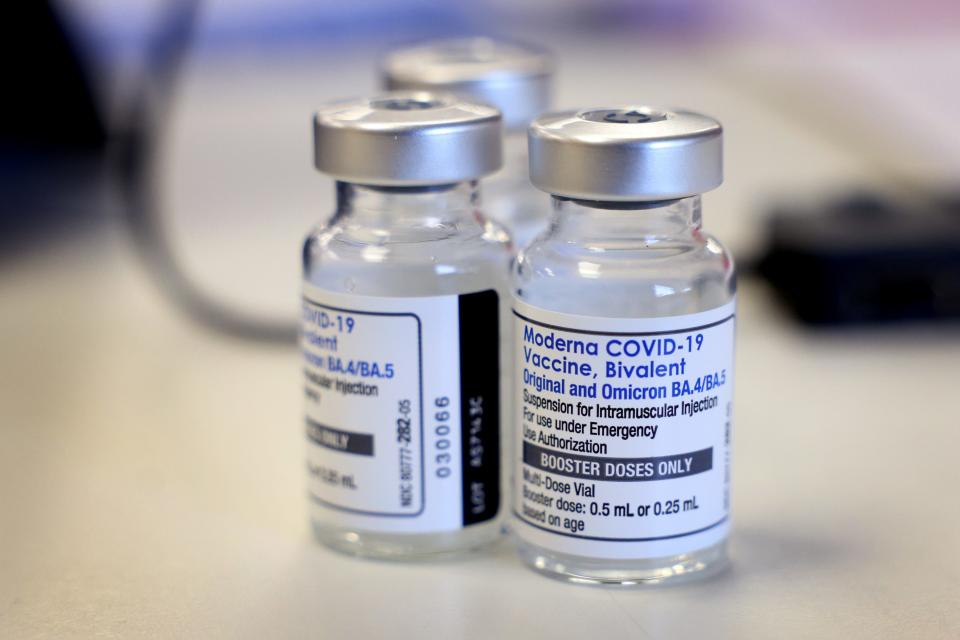COVID rates are climbing but nowhere near what they were. This year's story is different.
Rates of COVID-19 are ticking upward nationwide but the country is unlikely to see the kind of widespread infections and hospitalizations seen over the last three summers, experts said.
Summers of 2020, 2021 and 2022 saw increases in cases, hospitalizations and deaths. This summer, the upswing is coming later and is much smaller, hospitalization and wastewater data suggests.
Plus, while COVID-19 will probably never completely go away, vaccines, antivirals, masks and other prevention tools, along with improved care for the very sick, have transformed an urgent crisis into a manageable disease, experts said.
"The situation at the moment is nothing even close to where we have been," said Bill Hanage, who co-directs the Center for Communicable Disease Dynamics at Harvard T. H. Chan School of Public Health.
Unlike previous summer surges that were mostly caused by the arrival of a new COVID-19 variant, experts say rates are on the rise now because of human behavior.
"This is the first time we’ve seen an increase that hasn’t been specifically related to a new variant of concern," said Jodie Guest, professor and senior vice chair of the Department of Epidemiology at Emory University’s Rollins School of Public Health.
Summertime travel and recent heat waves and heavy storms that drove people inside likely contributed to increased transmission.
Americans also are testing less frequently, which means they're more likely to carry the virus unknowingly before attending gatherings or traveling, Guest said.
And behaviors treated with caution a year or two ago, like eating indoors in restaurants, have become normal again, said Dr. Daniel Griffin, an infectious disease specialist and clinical instructor of medicine at Columbia University in New York City.
Griffin, who treats hospitalized patients at Optum, said he's seen about a 20% to 30% increase in COVID-19 patients over the last few weeks. "It's back on the radar," he said, "and people keep asking what's going on?"
But unlike earlier years, Griffin said, virtually all of his current patients are over 65 or immunocompromised. "The common denominator is they didn't get treatment in that first week," he said. Either they or their provider thought they'd handle an infection without a problem and didn't prescribe the antiviral Paxlovid, which has to be given early in the course of an infection. "The second week, there isn't as much we can do."
People who are severely immunocompromised and older people who are vulnerable to all respiratory infections will continue to be the most affected by COVID-19, Hanage said.
"Is there preventable suffering and death? The answer to that is 'yes.' We should keep focused on that," he said.

What infection rates look like now
Infection rates have climbed again in several states, including New York, Florida, California and Massachusetts, according to state and surveillance data.
But it's difficult to get a clear picture of COVID-19 transmission because health officials dismantled surveillance systems after the disease was declared no longer a public health emergency.
Nationally, the Centers for Disease Control and Prevention data is several weeks out of date and no longer tracks infections. Most Americans take at-home tests and don't report results.
The latest CDC data, from July 22, shows a 12% increase in hospitalizations from a week earlier and nearly one-third of wastewater testing sites showed a large increase in virus levels over the previous two weeks.
Helix, a viral surveillance and population genomics company, has seen a 30% to 40% increase in positive test results every two weeks since the end of June, or about double the rate it was a month before, said Shishi Luo, associate director of bioinformatics and infectious diseases.
"We're still seeing an upward trend and still haven’t seen a peak," she said.
Helix partners with the CDC, retail pharmacies and other organizations to get a better idea of the data, but Luo said it's still impossible to compare it to previous summer surges.
Wastewater data, which indicates how much SARS-CoV-2 virus is in a community, also has shown increases in the virus that causes COVID-19 in recent weeks.
WastewaterSCAN, which tracks 170 treatment plants across 35 states, is seeing an increase in the sites that serve the biggest populations, but a "mixed bag" from plant to plant, said Ali Boehm, the project's principal investigator.
"It looks like trends are starting to go up," said Boehm, also a professor of environmental engineering at Stanford University. Most of the increases seem to be coming from larger communities in the West and South, with less of an increase in smaller communities and those in the Midwest and Northeast, she said.
In the past, such increases in larger cities and in concentrations of the virus have tended to lead to more widespread outbreaks.
"We're all wondering what's going to happen next," Boehm said. "It does seem that there are some signs that we could have a surge in the future."

Leading variants
Previous surges have largely been driven by the introduction of new variants or sublineages, Boehm and Luo said.
A variant called EG.5, sometimes unofficially called "Eris," is on the increase now, accounting for 17% of all infections in the United States as of Saturday, according to the CDC, up from just 12% a week earlier.
Although it's increasing quickly, lots of variants are competing at the same time with "shades of gray" differences, and none seems capable of a delta or omicron "knockout punch," said Andrew Pekosz, a virologist at the Johns Hopkins Bloomberg School of Public Health.
XBB.1.16 is the next most common variant, accounting for more than 15% of all infections. Helix found this variant made up only about 5% of cases in states like California, Maryland, Texas, Florida, Minnesota and New Jersey.
XB.1.5, which had been the dominant variant this spring and into the summer, now accounts for just about 10% of cases.
There's no indication EG.5, which has been circulating in other countries for longer than the U.S., is more dangerous than previous variants, Pekosz said.
The spike protein, the target of vaccines and most antibodies, is largely unchanged between the EG.5 and XBB lineages. So, anyone, who caught COVID-19 while the XBB variants have been circulating or who gets the updated vaccine this fall should be well protected going into the winter months, he said.
"It doesn't look like it's going to be a big problem in terms of evading immunity" for people with those protections, Pekosz said.

What lies ahead for the fall and winter
It's impossible to predict what the infection rate will look like in a few months, experts said.
Although most respiratory viruses increase in winter, it's not clear how much of those COVID-19 spikes were driven by the virus and how much by human behavior ‒ people travel to see family and spend more time indoors as temperatures fall.
While Helix found SARS-CoV-2 is currently the most common respiratory virus – making up more than 94% of pathogens in people over 12 – that might not be the case this fall and winter season. Data shows last year other respiratory pathogens, like the influenza virus and respiratory syncytial virus (RSV), outpaced or were on par with COVID-19 cases, Luo said.
But this time around, hospitals and laboratories are equipped to test for most respiratory pathogens and treat them accordingly, said Dr. Emily Volk, president of the College of American Pathologists and vice president of system pathology and laboratories at the University of Louisville Health.
"We use a panel of tests to test patients for not just COVID-19 but also influenza, RSV, whooping cough and other kinds of illnesses," she said. "We have normalized COVID-19 as one of the many underlying causes of upper respiratory illness."
Although the government is no longer sending free at-home tests, experts say there's still ample supply at local retailers.
And don't be too quick to throw away at-home tests with expired time stamps. The Food and Drug Administration has extended the expiration dates of various at-home COVID-19 tests by months and even years. The extended expiration dates by type of test and brand can be found on their website.

To boost or not to boost?
Experts generally agree that people who are severely immunocompromised or are older ‒ above 65 or 70 ‒ should get vaccine boosters, probably at least twice a year if they are particularly fragile.
For other people, the data is less clear.
Most people who have been vaccinated and/or infected a few times are probably protected against severe infection and hospitalization Hanage and others said, as long as the virus doesn't change dramatically.
"This is the question for which we don't have great answers," Hanage said. Younger, otherwise healthy people "are not likely to get great benefit" from boosting.
Health care workers, who are particularly needed during the winter cold and flu season, when hospitals tend to fill up, should consider getting vaccinated to provide a little more protection against infection during that time, he said. Teachers like him or others who don't want to miss work or important personal events should consider vaccination this fall or early winter, he said.
Even for those who don't get another vaccine, there are plenty of preventive measures to take, Hanage said.
Proper ventilation will help reduce the spread of infection in indoor spaces. Masking in crowded indoor spaces, including while traveling. Staying home when feeling ill. And testing before visiting vulnerable people will help reduce the spread of COVID-19 and other infectious diseases, Hanage said.
Despite the recent uptick, there is much less reason for most people to fear COVID-19 now than earlier in the pandemic, he, Griffin and others said. While about 2% of people who caught COVID-19 in 2020 died, now the figure is closer to 0.2%, he said, and rates of hospitalization and long COVID have fallen dramatically too.
"If you combine having immunity and then you add taking the appropriate medicine at the right time and right dose, your chance of ending up having a bad outcome has really gotten to be quite small," Griffin said.
Contact Karen Weintraub at kweintraub@usatoday.com and Adrianna Rodriguez at adrodriguez@usatoday.com.
Health and patient safety coverage at USA TODAY is made possible in part by a grant from the Masimo Foundation for Ethics, Innovation and Competition in Healthcare. The Masimo Foundation does not provide editorial input.
This article originally appeared on USA TODAY: COVID rates climb, but no reason to worry, experts say.

